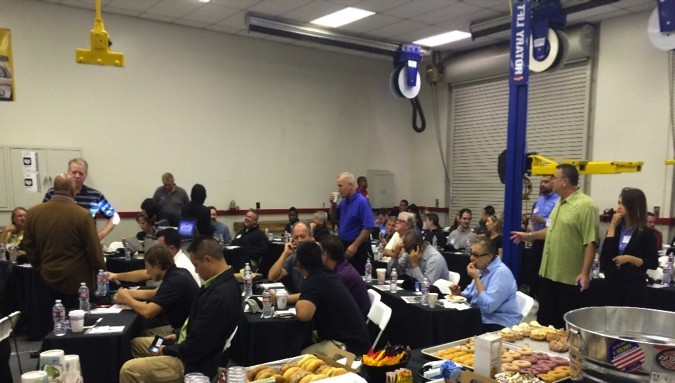The technology in cars built today is so advanced compared to cars built just a decade ago. Each car and truck that is on a dealership lot right now is packed with sensors, computers, and are built out of exotic metals like aluminum and ultra-high strength steel. As such, customers who bring their vehicles to a body shop for repair might wonder, “does this place know how to repair my new car correctly?”
That is a very fair question to ask. After all, this could be the most technologically advanced piece of machinery they’ve ever driven, and in the back of their mind is the doubt about whether the repair technicians have been fully trained on how to fix their car. When their car is finished being repaired, the last thing they want is to have to take it back to the shop for more repairs.
Luckily, the management team at Pacific Elite Collision Centers is continually ensuring that their auto body technicians, and the insurance companies they serve, all know how to repair cars with the most sophisticated and knowledgeable methods – especially when it comes to the newest, most advanced model vehicles. This requires continuous education and training.
Just recently, Pacific Elite Collision Centers, alongside Ford and I-CAR, hosted an event that focused heavily on informing collision repair facilities and insurance partners about new vehicle technologies that repairers can expect to see in the next five to ten years, and how to repair them. Ford showcased the upcoming 2015 F-150, which Ford hails as the “future of tough”, and broadcasted when auto body technicians can receive classes from I-CAR to repair vehicles that are just as advanced as the F-150.
The event was made possible by Shirin Hezar, the Director of Industry Relations for Pacific Elite Collision Centers.
 “I felt it was imperative to showcase our repair methodology, and to educate our insurance and industry partners; so to instill a level of confidence that the vehicles their customers entrust us with are being repaired with the knowledge and technology required of today’s modern vehicles.” – Shirin Hezar
“I felt it was imperative to showcase our repair methodology, and to educate our insurance and industry partners; so to instill a level of confidence that the vehicles their customers entrust us with are being repaired with the knowledge and technology required of today’s modern vehicles.” – Shirin Hezar
Now, you may be wondering, why are there so many advances and changes in how cars are being made? All of these rapid changes in automobile construction and repair stems from an increasing fuel mileage standard, imposed upon carmakers by the federal government. This continuous pressure, coupled with a consumer’s increased awareness and demand for safer vehicles, has forced engineers to look to new materials and construction methods to build safer, lighter and more fuel-efficient cars and trucks. The flip side to this is that these new materials do not get repaired the same way auto body repair has always been done. Many of these materials cannot be welded or heated, and must be bonded through mechanical means such as rivet bonding.
Consumers should know that there is no federal mandate for auto body repair shops, and there is no licensing or oversight for repair technicians. Therefore, there is nothing stopping a repair technician from fixing your modern car the wrong way. It is an absolutely imperative that auto body repair shop management stay current in the proper repair techniques for vehicles entering their shop today, tomorrow and even five years into the future. The way to do that is to stay ahead of the curve, such as Pacific Elite Collision Centers has with their continuing education seminars.
Thanks to Shirin, Pacific Elite Collision Centers, Ford and I-CAR, all auto body technicians will receive proper training for all future automotive vehicles.

